How Low Can You Go?
I tend to get caught up on certain cook book authors, and for the past month it has been all about Heston Blumenthal. Head chef at the Fat Duck in the U.K., his cookbook In Search of Perfection has been fostering idea after crazy idea. In a Serious Eats article, we wrote about cooking a pizza on the bottom of a cast iron skillet , to great success. The best part is that his mad-cap search for perfection is, except for a few mentions of blowtorches, essentially plausible at home. That's when I came to the roast chicken section.
A raw chicken is about 80 per cent water. Cooking it is basically a battle to hang on to some of that moisture, so that you end up with a deliciously succulent bird. In this recipe, two techniques help achieve that aim: brining and low-temperature cooking.
Brining is something I've tried before and completely recommend. But how low is the low-temperature cooking? I'd just done that a few months ago at 250 degrees. But apparently that wasn't even close to what Heston wanted. The bird is done at 140, so he said to set the temperature there and cook it for a long time. Here's the idea: the bird is supposed to be done cooking when it reaches 140. So put it in environment at that temperature, and wait until it gets there.
It might sound all well and good, but that's a good 60 degrees below where my oven can go. I thought I was going to have to forget it until I came across the one instrument that I'd never considered before. The crock-pot. Here was something specifically designed to cook foods for a long time at a low temperature. Would it work?
The "hot" setting was way too hot, and even "low" maintained a temperature far above what I needed. So then I had to turn to the "keep warm" setting--you know, the one your turn to after the food is done. And like some destined fate, when I tested the temperature of the setting it came out exactly to 140. It was time to start.
Problems started immediately thereafter. Heston likes to plunge his bird in boiling water for 30 seconds to help get a crisper skin, the same method that helps those ducks in Chinatown windows look so crackly. But I haven't a pot near that big. My biggest one would quickly lose it's boil if I stuck a three and half pound bird in. I also didn't brine the bird. It's a hassle, and I wanted to see what this method would be like with just the slow cooking.
The biggest problem, however, was how Heston wanted to cook the skin. After the bird had cooked for 5 hours, the skin looks pale and gross, and needs some really high heat to make it look appetizing, not to mention crackly and tasty, the whole point of roast chicken. He advised letting it sit for an hour, and then sauteing the whole thing in a very hot pan to crisp the skin. Unfortunately, sauteing a whole bird is about as easy as it sounds, and no where near comprehensive. Blotches of burned skin appear next to untouched flesh. I don't doubt that it can be done, but it's really hard and not worth it. The pan was so hot the oil splattered violently when the chicken went in. I had to use a pan top as a shield to protect my own skin. It could not have gone worse.
But the meat? Absolute perfection. It was without a doubt the best chicken flavor I'd ever achieved. It was juicy, full flavored, and weirdly rich. After 5 hours in the crock pot I expected there to be all these juices floating in the bottom, but there was maybe a tablespoon--they all stay in the bird. He says that you can't even make a sauce out of the drippings because there won't be enough. He thinks it's better to have a chicken full of those juices. I happen to agree with him.
It's just that pesky skin, which, actually, I have some ideas about. More to come in a later post.
Heston's Ultra-Slow Chicken
- 1 Chicken
- 3 tablespoons Canola Oil
Adapted from Heston Blumenthal's In Search of Perfection
**In response to some questions about how sanitary this method is, I've included a preliminary boiling step. Heston had this in his original recipe, and I just chose not to include it because I didn't have a pot big enough. I was a little more reckless back then. Anyway, he believes this gets rid of any bacteria issues you may have.
Bring a large pot of water to boil, and toss the chicken in. Boil for about 30 seconds. Then remove the bird.
Meanwhile, set the crock-pot to the "keep warm" setting and wait until it hits 140 degrees. This might be different on other models, so wing it. If it's too hot, try to crack the lid open a tad. If too cold, place aluminum foil over the opening, and then place the lid on top.
Set the chicken inside, cover, and cook until the internal temperature reaches 140, anywhere from 4-6 hours. Remove the bird and let sit for 30 minutes to an hour. Set an iron skillet over high heat for 10 minutes. Add 3 tablespoons of Canola oil and when it starts to smoke, add the chicken. How best to grip it is beyond me. I had a big pair of tongs that helped me rotate it until it looked like I'd browned whatever skin I could.
Slice up immediately and eat.
Chicken, Chicken, Crock-Pot, Heston Blumenthal, New York, Roast Chicken

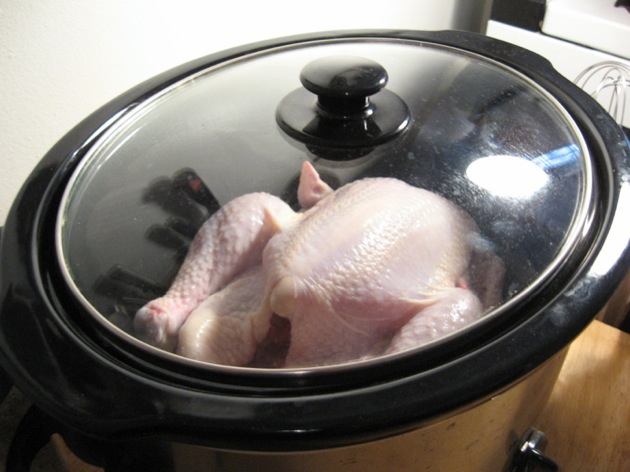
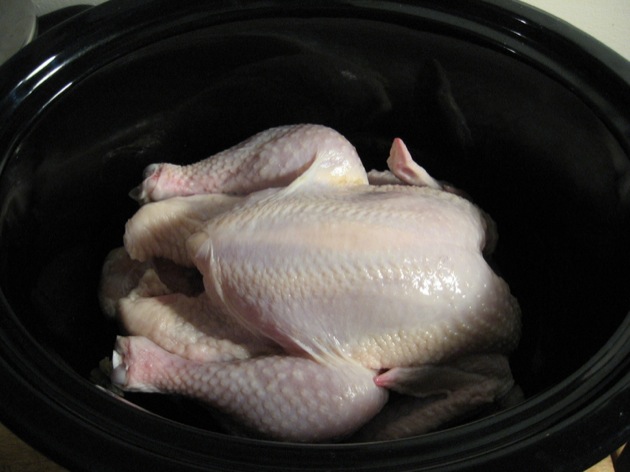
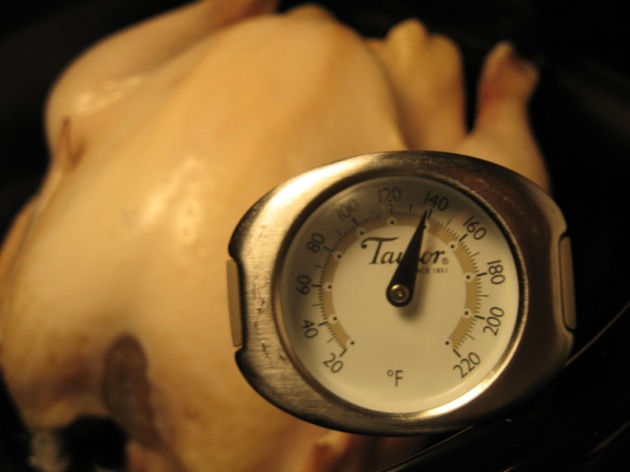
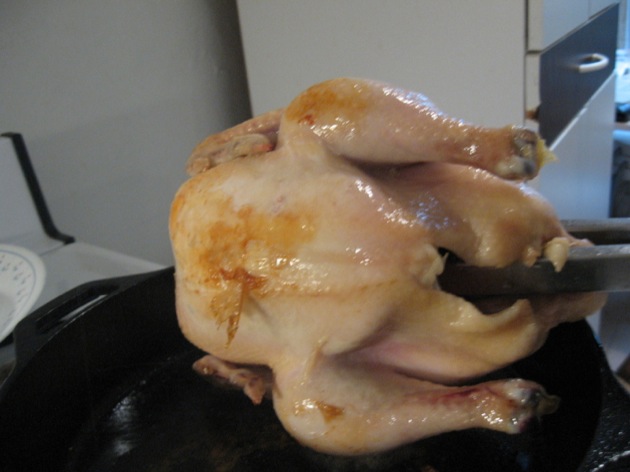
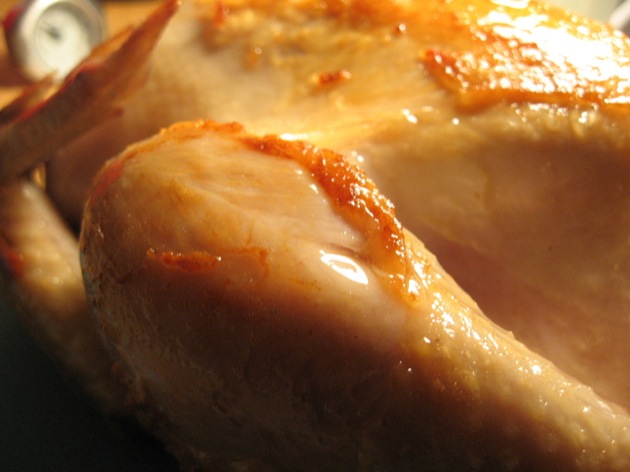
Comments:
Blog Comments powered by Disqus.